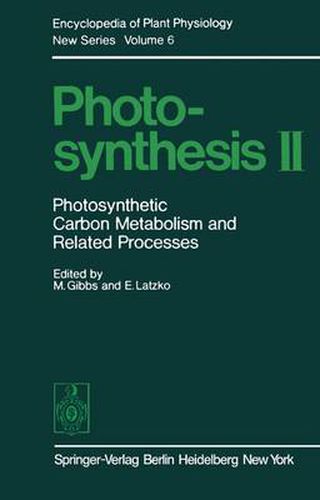Photosynthesis II: Photosynthetic Carbon Metabolism and Related Processes

Photosynthesis II: Photosynthetic Carbon Metabolism and Related Processes
M. GIBBS and E. LATZKO In the preface to his Experiments upon Vegetables, INGEN-Housz wrote in 1779: The discovery of Dr. PRIESTLEY that plants have a power of correcting bad air … shows … that the air, spoiled and rendered noxious to animals by their breath ing in it, serves to plants as a kind of nourishment.
INGEN-Housz then described his own experiments in which he established that plants absorb this nourishment more actively in brighter sunlight. By the turn of the eighteenth century, the nourishment was recognized to be CO . Photosynthetic CO2 assimilation, the 2 major subject of this encyclopedia volume, had been discovered. How plants assimilate the CO was a question several successive generations 2 of investigators were unable to answer; scientific endeavor is not a discipline in which it is easy to put the cart before the horse . The horse, in this case, was the acquisition of radioactive isotopes of carbon, especially 14c. The cart which followed contained the Calvin cycle, formulated by CALVIN, BENSON and BASSHAM in the early 1950’s after (a) their detection of glycerate-3-P as the first stable product of CO fixation, (b) their discovery, and that by HORECKER 2 and RACKER, of the COz-fixing enzyme RuBP carboxylase, and © the reports by GIBBS and by ARNON of an enzyme (NADP-linked GAP dehydrogenase) capable of using the reducing power made available from sunlight (via photo synthetic electron transport) to reduce the glycerate-3-P to the level of sugars.
This item is not currently in-stock. It can be ordered online and is expected to ship in approx 4 weeks
Our stock data is updated periodically, and availability may change throughout the day for in-demand items. Please call the relevant shop for the most current stock information. Prices are subject to change without notice.
Sign in or become a Readings Member to add this title to a wishlist.


